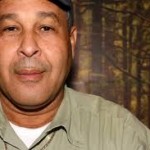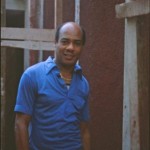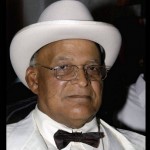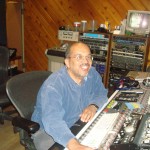With over 150 albums in his catalog and still counting, record producer, studio engineer and talent scout King Jammy has every reason to lay a claim for being the top record producer of the 1980’s.
Speaking to Jammy recently from his St Lucia Road studio in the heart of the Waterhouse community, he declared that, in addition to his released albums, he still has an approximate half of that amount that have not yet been released, and “I have gone back into production full-time, now that I have finished grooming my sons into the business, and I will now be producing on a more regular scale and releasing more songs”, Jammy revealed.

In view of this revelation, and having knowledge that the producer has been in the music business since the 1960’s, I was tempted to ask him about retirement, to which he replied, “At my age now, me pass retirement, but me no feel like a man who fi go sit down a him yard, mi still feel fit and all right, so me still have to work. And then again, the people need me because some of the times the type of songs you hear them making nowadays is not up to standard, so me still have to make music so the people have something good to listen to”, Jammy said.
Listing as his main influences the sound system giant King Tubby’s and the larger-than-life record producer, Bunny Lee, Prince Jammy, as he was originally called, claimed that these were the persons who shaped his illustrious career.

The embryonic stage of his career saw Jammy (born Lloyd James in 1947) being raised, schooled and groomed in his birth community of Waterhouse. He started in the music business as a teen during the 1960’s with a little sound system. Jammy expanded on this, as we spoke in the ambiance of his adjoining premises.
“That same year we got Independence, I was learning trade with King Tubby’s and started to build amplifiers, and so I just built couple boxes and start a little sound and began playing at some house parties, mainly to amuse the people,” Jammy explained. Sitting at the feet of the King, the Prince also developed the art of studio engineering. In order to equip himself with the necessary technical skills required for his future endeavors, Jammy did a course with National Technical Schools in America, while being an apprentice with Tubby’s, and shortly thereafter started his sound, Jammy’s Hi-Fi.

“We used to get a lot of dates even from the early days because of the songs we played, which also included foreign music that attracted a lot of girls. And you know when you do that, you get more men following you,” Jammy said.
TURNING POINT
He left for Canada in 1970 “just to give it a try”. Bolstered by dub plates (recordings captured on soft-waxed vinyl) sent to him by King Tubby’s employee, Bunny Lee, Jammy developed an appreciable following in Canada through a sound system he had built. According to Jammy, the move literally brought reggae music to life in an environment where, hitherto, it had never flourished. He also took another giant step there with his first production, Nana McLean’s, Single Girl, a remake of Sandy Posey’s original. The general operations, however, weren’t much to his liking, and he returned home in 1974.

Jammy made one more trip there, and upon the urgings of Bunny Lee, he returned home for good in 1976. The island was in election mode, and as hearts throbbed with fervent anticipations, Jammy made the move that was to prove the turning point in his life. Phillip Smart, Studio Engineer with Tubby’s, had just left and King Tubby’s asked Jammy to replace him in that position. Jammy graciously accepted the offer, while venturing into the next phase of his career, that of being a record producer.

“You have the youth them in Waterhouse that I grow up with, so I was encouraged and started to produce in 1977,” he said.
Some of the most prominent to come under his wings were Wayne Smith, Purple Man, Cocoa Tea, Half Pint, Tulloch T, Johnny Osbourne, Dennis Brown, Gregory Isaacs, Shabba Ranks, Bounty Killer, Admiral Bailey, Leroy Gibbon, Elephant Man and Beenie Man.
While still working as studio engineer with King Tubby’s, Prince Jammy used the opportunity to forge his own distinctive mixing sounds. Out of it came a revolution in the new musical sound called dub, a music form, that placed emphasis on the drum and the bass, with the occasional insertion of a deejay’s commentary or vocals.

As the 1980’s dawned, Jammy gradually emerged as the mix-master in the recordings studio and created dozens of dub recordings that ruled the dancehall in the ’80’s.
So while Studio 1 ruled the 1960’s and Channel 1, the 1970’s, Prince Jammy, now known as King Jammy, was the man of the 1980’s as far as popular music was concerned.
He led the digital revolution in 1985 with the first totally digital reggae record, Under Mi Sleng Teng, perhaps the most versioned song in reggae history.
According to Jammy, “Noel Davey and Wayne Smith came to me with the rhythm. It never sounded like reggae to me, so I slowed down the beat and got the drum thing going and then we overdubbed, voice on it, and dub on the rest of the instruments, and everybody love it,” Jammy asserted.

He was adamant that electronic dance music (EDM) came from his creations, particularly that recording.
“Even Major Lazer himself, who deal with EDM, them come to me enuh, and Rolling Stone magazine take an interview with me and them, and them say the Sleng Teng rhythm whe me build, the mood of the EDM music is coming from those type of rhythms and the mixes that I did,” Jammy said. A recipient of the Order of Distinction from the Jamaican Government, King Jammy
produced dozens of top 10 hits during his tenure. Perhaps best remembered were Cocoa Tea’s Tune In, and the Frankie Paul triplet, Sarah, I Know the Score and I Want to Rock.


You must log in to post a comment.